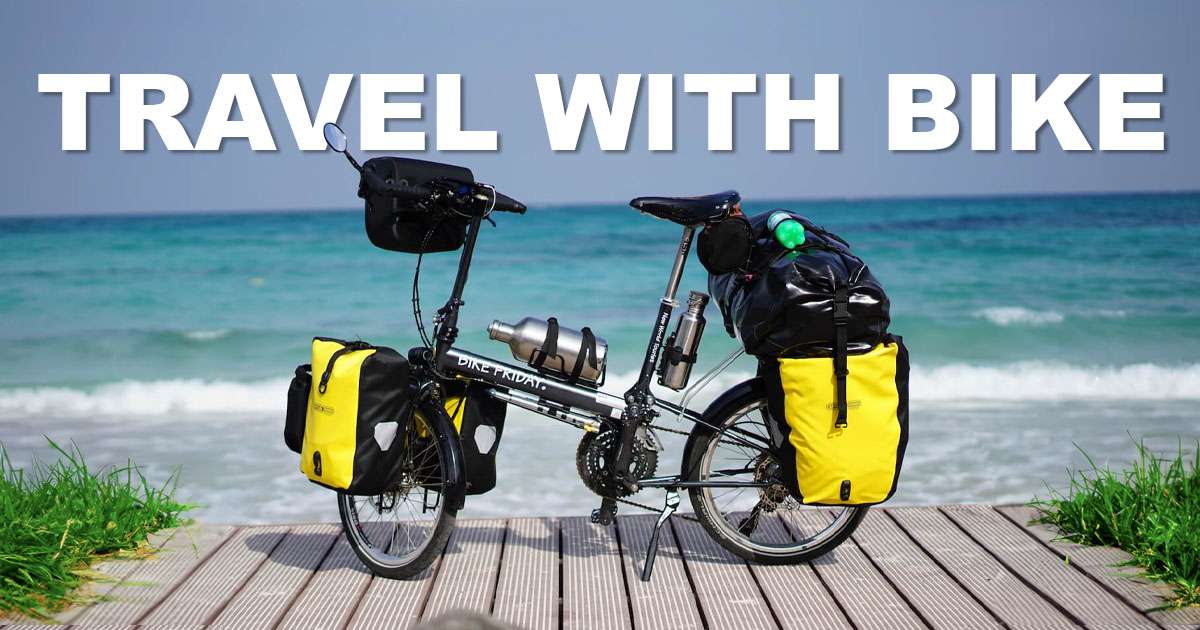Bike Touring for Beginners: Your Ultimate Guide to Traveling on a Bicycle

Bike touring is a unique blend of adventure, exercise, and travel, providing an unparalleled opportunity to explore the world at your own pace. Whether it’s a short weekend trip or an epic cross-country journey, bike touring offers a sense of freedom and connection with the environment that few other modes of travel can match.
Recent studies have shed light on the growing popularity of this form of sustainable tourism. For instance, a research paper published in MDPI investigates the physical benefits of a 7-day bicycle tour covering 480 km. Similarly, another study mentioned in Sage Journals focused on injury predictors among recreational long-distance riders, providing valuable insights for both novice and experienced cyclists.
Therefore, planning is especially crucial for beginner cyclists embarking on a bike tour. This comprehensive guide is designed to help you navigate the exciting world of bike touring. It covers all the necessary aspects you need to consider before hitting the road:
The Beginner’s Guide to Bike Touring and Travel
Venturing into the world of bike touring can be a thrilling adventure. If you’re considering this mode of travel, having the right bike, a well-thought-out route, good physical preparation, essential gear, and a flexible mindset are key elements to ensuring a successful trip.
1. Choosing the Right Bike
The first thing to do when planning a bike tour is picking the right bike. While any bike can work for a short trip, special touring bikes are better for longer rides because they’re made to carry heavy stuff and last a long time. But don’t worry if you can’t afford one – regular road or gravel bikes can also be used. You just need to pack lighter and set them up with racks and bags.
2. Planning Your Route
Picking where to go is an exciting part of planning. It depends on how much time you have. If you only have a week, try a local loop to test your gear and stamina without going too far from home.
If you have more time, think about visiting countries known for being safe and great for cycling, like Japan or South Korea. They have beautiful scenery, good roads, and friendly people.
But don’t plan everything too much. Leave space for surprises and changes along the way. That’s what makes bike touring fun!
3. Training and Fitness
Getting your body ready is really important for a bike tour. Try to ride your bike 3 or 4 times a week. Make sure to include one day when you cycle on different kinds of surfaces, like smooth roads and gravel paths. This will help you get used to how your bike handles different terrains.
It’s also important to take rest days to let your body recover. Pay attention to how you feel and don’t push yourself too hard. As you keep biking, you’ll start feeling stronger and more ready for your tour.
4. Gearing Up
Having the right gear can really improve your bike tour. You’ll need things like panniers to carry your stuff, a strong rack for your bike, a bag for your handlebars to keep snacks and maps handy, covers for rainy days, a daypack for when you’re not riding, water bottles to stay hydrated, and lights for safety.
You don’t have to spend a lot on gear to have a good time. There are plenty of affordable options that work just fine. What matters most is finding gear that does what you need it to do, not how much it costs.
5. On the Road
Once you’re on the road, embrace the journey. Stick to secondary roads for a more enjoyable experience, as these routes often offer less traffic and more scenic views. Remember to slow down, stop often, take pictures, and interact with locals and other cyclists. These interactions can lead to valuable tips and enrich your travel experience.
Exploring the Multifaceted Benefits of Bike Touring
Here are some reasons why you should consider bike touring for your next adventure:
1. Health Benefits
Bike touring is an awesome way to keep your body in great shape. It’s all about being active for long stretches, which can boost your heart health, make your muscles stronger and more flexible, and help you manage your weight. And while you’re cycling, your body releases endorphins, which are natural mood boosters that can make you feel really good and reduce stress. Plus, studies have shown that bike tours are safe for people of all ages. So not only is it good for your body, but it’s also a safe and enjoyable activity for everyone involved.
2. Affordable Travel
Bicycle touring is an affordable way to travel. With a budget of around $10 a day, you can cover food, accommodation (if you’re camping or staying in budget hostels), and other necessities. This makes it an excellent option for long-term travel or for those seeking to explore on a budget.
3. Eco-friendly
Bike touring is a green way to travel. It creates very little pollution compared to driving or flying. When you ride a bike, you’re not just seeing new places, you’re also helping to take care of the environment.
4. Accessibility
One of the best things about bike touring is its accessibility. It’s an activity that’s available to everyone, regardless of age, physical condition, or budget. Whether you’re a seasoned cyclist or a beginner, bike touring can be tailored to suit your abilities and resources.
5. Deep Connection with Nature
Bike touring allows for a deeper connection with nature. It’s a slower form of travel that lets you appreciate the scenery, breathe in fresh air, and fully immerse yourself in your surroundings. It provides opportunities to explore off-the-beaten-path locations that might be inaccessible by other means of transport.
6. Cultural Interaction
Lastly, bike touring encourages more interaction with locals. Since you’re traveling at a slower pace, you have more opportunities to stop at local shops, eat at local restaurants, and engage with the community. These interactions can immensely enrich your travel experience and give you a deeper understanding of the places you visit.
Embracing the Adventure: The Flexibility and Freedom of Bike Touring
Bike touring is an exciting adventure that requires you to be flexible and strong. You might face challenges like bad weather, bike problems, or changes to your route. Instead of seeing these as problems, think of them as chances for new experiences and lessons. Embrace the unexpected and let it add to your journey.
The best thing about bike touring is the freedom it gives you. You can explore new places at your own speed, change your plans whenever you want, and have adventures you wouldn’t get with other types of travel. So, as you start your bike tour, enjoy the scenery, have fun riding, and treasure all the special moments along the way. Happy touring!

